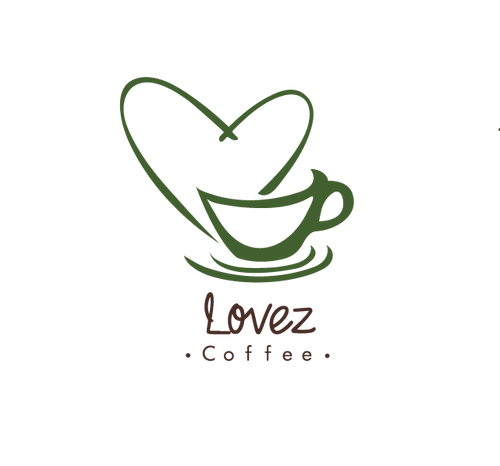
First Sip
Coffee is more than a drink. It’s a ritual, a social glue, and in many cultures, a point of national pride. While the base ingredient may be the same, how people prepare, serve, and enjoy their coffee varies wildly from one corner of the world to the next.
Some cultures sip slowly and chat, others stand at counters and knock back espresso in a flash. Some pour it from spouted pots with centuries of tradition; others froth it, spice it, or sweeten it beyond recognition. Here’s how some people enjoy their coffee around the world, from the espresso bars of Italy to the strong brew of Ethiopia.
Italy: Fast, Strong, and Ritualistic
In Italy, coffee is a serious business. Walk into any Italian bar (which often functions more like a café), and you’ll find locals standing at the counter, quickly sipping a shot of espresso. It’s short, strong, and never rushed—but never drawn out either. Italians rarely linger over coffee; it's a pit stop, not a sit-down.
There’s also a specific rhythm to the day. A cappuccino or caffè latte is reserved strictly for the morning, usually with a pastry. Order a milky coffee after noon and you’ll get a raised eyebrow—Italians believe milk after a meal interferes with digestion. After lunch or dinner, it’s a straight espresso. No sugar, no cream, no nonsense.
Spain: Social and Sweet
In Spain, coffee is as much about socializing as it is about caffeine. Spaniards typically enjoy several types of coffee throughout the day. The café con leche - half strong coffee, half hot milk - is a breakfast staple. Midday or in the afternoon, you might see a cortado (a small espresso “cut” with a little milk), or a café solo—the Spanish version of a straight espresso.
Coffee often accompanies a leisurely break or sobremesa—the time spent talking at the table after a meal. Unlike Italy, Spaniards take their time. It's common to sit at an outdoor café and sip slowly while chatting, reading, or just watching the world go by. Coffee isn’t rushed. It’s a part of life’s flow.
Sweden: Fika and the Art of the Pause
In Sweden, coffee is tied to the cultural ritual known as fika. It’s not just a coffee break—it’s a mindset. Fika means pausing during the day to slow down and connect with others, usually over coffee and something sweet, like cinnamon buns or cookies. It can happen at home, at work, or in cafés. What matters is the act of pausing.
Swedes drink a lot of coffee—among the highest per capita in the world—and they typically enjoy it black and brewed strong. The coffee itself isn’t fancy; the moment is what counts. In the land of long winters and quiet reflection, fika is an everyday act of mindfulness.
Turkey: Strong, Thick, and Steeped in Tradition

Turkish coffee is a whole experience. Finely ground coffee is simmered slowly with water and sugar (if desired) in a small copper pot called a cezve, then poured - grounds and all - into a small cup. It’s strong, unfiltered, and often served with a piece of Turkish delight on the side.
Drinking Turkish coffee is not about the caffeine hit; it’s about tradition, hospitality, and conversation. It’s often offered to guests as a symbol of welcome. In the past, it was even used in marriage rituals - brides to be would serve coffee to their suitor’s family, sometimes adding salt to the groom’s cup to test his temperament.
United States: On the Go and Over-Sized
In the U.S., coffee is often about convenience and personalization. Drive thru, to go cups, and 20 ounce flavored concoctions dominate. The drink itself can be a black drip coffee, a sugary caramel macchiato, or a plant-based oat milk latte with two shots and syrup. It's all fair game.
Coffee culture in America is as varied as the people. There’s the diner culture - bottomless cups of plain brewed coffee - and the hip third wave scene that obsesses over single origin beans and pour-over methods. It can be about speed, status, or craft, depending on where you are.
The third wave of coffee movement treats coffee more like a fine wine than a commodity. third wave of coffee emphasize:
High-quality beans often single-origin and ethically sourced
Precision brewing methods like pour-over, siphon, Chemex, AeroPress
Skilled baristas who focus on technique and flavor extraction
Transparency about sourcing, roasting, and preparation
A focus on the unique flavor profiles of different beans (e.g., fruity, floral, chocolatey)
Unlike first wave (mass-market coffee like Folgers) or second wave (Starbucks-style espresso drinks), third wave coffee movement prioritize craftsmanship, sustainability, and education. The vibe is usually minimalist, intentional, and deeply passionate about coffee as an artisanal product.
A shoot out to Howard Shultz. He played a central role in launching the second wave of coffee in North America by transforming coffee from a utilitarian drink into a lifestyle experience.
Beginning in the 1980s, Starbucks popularized espresso based beverages like lattes, cappuccinos, and mochas, introducing millions of Americans to a more sophisticated coffee culture. They emphasized ambiance, turning cafés into comfortable, social spaces rather than just quick stops. This shift brought attention to origin, roast, and customization, paving the way for greater appreciation of coffee quality though still within a mass market framework. Starbucks essentially bridged the gap between convenience and craft, laying the groundwork for the third wave that followed.
Ethiopia: Ceremony and Community

Ethiopia is the birthplace of coffee, and drinking it there is an elaborate communal event. The Ethiopian coffee ceremony can take hours. Green coffee beans are roasted over a flame, ground by hand, and brewed in a traditional pot called a jebena. The host often adds spices like cardamom and serves the coffee in three rounds, each with symbolic meaning.
It’s not just about the drink. It’s about respect, connection, and community. Conversations run deep, stories are shared, and guests are honored through the offering.
Coffee here isn’t taken lightly. It’s revered.
Vietnam is one of the larger producers of robusta coffee beans. Vietnamese coffee is bold and distinct. Made with robusta beans (which are more bitter and caffeinated than arabica), it’s brewed through a phin filter that lets the coffee drip slowly into a glass. The kicker? Sweetened condensed milk. The result is a rich, creamy, and sweet brew that’s served hot or over ice (cà phê sữa đá).
In recent years, other variations have taken hold: egg coffee, coconut coffee, even yogurt coffee. Coffee shops in Vietnam are places to linger and chat, often with free wifi and a laidback atmosphere. It's about creativity, flavor, and community.
Japan: Precision and Innovation
Japan blends tradition with technology in its approach to coffee. While tea is historically dominant, coffee has carved out a major place in modern Japanese life. There’s a huge spectrum from canned coffee in vending machines to ultra-specialized kissaten (old-school coffee houses) and third wave cafés that focus on precision brewing methods like siphon or pour-over.
Presentation and quality are everything. Japanese cafés are often serene, minimalist spaces where coffee is treated with respect. But convenience reigns too—you’ll find canned coffee everywhere, from vending machines to train stations. It’s a culture of contrasts, and coffee fits right in.
France: Café Culture and Cigarettes
In France, coffee is tied to café culture and public life. A typical French coffee is small, black, and strong - a café(espresso). At breakfast, a milky café crème or café au lait might be served with a croissant, but outside the morning hours, milk in coffee is rare.
French cafés are places for reflection and conversation. People linger, read the paper, smoke cigarettes, and watch the world go by. The coffee isn’t extravagant; the atmosphere is what counts. It’s less about the drink and more about the experience.
Brazil: Simple and Ubiquitous
Brazil is the world’s largest coffee producer, and coffee is everywhere. The most common style is cafezinho - a small, strong, sweet cup often served to guests as a gesture of hospitality. It’s simple, no frills, and deeply woven into daily life.
Cafezinhos are typically brewed using cloth filters and served throughout the day, at home, at work, or in tiny roadside cafés. Coffee is not just a commodity in Brazil - it’s a cultural constant.
Final Sip
One Drink, Infinite Expressions
From the structured rituals of Ethiopia to the fast - paced bars of Italy and the laid-back cafés of Spain and Sweden, coffee reveals how people live, socialize, and relate to time. It adapts to climate, tradition, and personality. Some cultures cherish the process, others the conversation. Some brew fast and drink slow; others do the opposite.
But in every culture, coffee is more than a beverage. It’s an expression of values, of pace, of connection. One drink, infinite ways to enjoy it.




